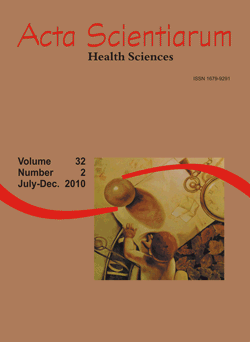<b>Medicinal plants used by Itamaraty community nearby Anápolis, Goiás State, Brazil</b> - doi: 10.4025/actascihealthsci.v32i2.8155
Resumen
The use of plants for therapeutic purposes has been reported from ancient in Iran, India and China, especially. Recently, the use of in-natura plants as herbal medicines has grown in a systematic and increasing way, especially when combined with conventional therapy. In Brazil, the knowledge on the use of medicinal plants has been and is primarily derived from the indigenous, with African and European influences, and several studies have been done in order to verify which plants have been used for medicinal purposes by the Brazilian population in several communities from the “cerrado” region. This work performed a survey with the population of Itamaraty nearby Anápolis, Goiás State, Brazil with ethnobotanical focus in order to recover and preserve the ethnobotanical knowledge of this region. In general terms, the use of medicinal plants in this neighborhood follows the cultural aspects reported by other authors on the need for use of alternative therapies for poor communities, beyond the general and common use of leaves and infusions as the main form of preparation, since Asteraceae and Lamiaceae families are the most cited to use as medicinal plants.Descargas
DECLARAÇÃO DE ORIGINALIDADE E DIREITOS AUTORAIS
Declaro que o presente artigo é original, não tendo sido submetido à publicação em qualquer outro periódico nacional ou internacional, quer seja em parte ou em sua totalidade.
Os direitos autorais pertencem exclusivamente aos autores. Os direitos de licenciamento utilizados pelo periódico é a licença Creative Commons Attribution 4.0 (CC BY 4.0): são permitidos o acompartilhamento (cópia e distribuição do material em qualqer meio ou formato) e adaptação (remix, transformação e criação de material a partir do conteúdo assim licenciado para quaisquer fins, inclusive comerciais.
Recomenda-se a leitura desse link para maiores informações sobre o tema: fornecimento de créditos e referências de forma correta, entre outros detalhes cruciais para uso adequado do material licenciado.























5.png)







